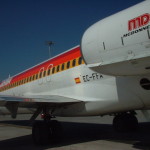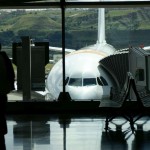Capacity -measured in available seat kilometres (ASK)- decreased by 1.4% and traffic -measured in revenue passenger kilometres (RPK)- fell by 6.3%.
Madrid – The load factor stood at 80.6% compared to 84.8% in September 2007. Air traffic data show the weakness in demand, affected by the complex economic situation.
In the long haul, capacity increased by 1.3% and traffic dropped by 3.1%, leading to a load factor of 84.6% (-3.9 points). In the South Atlantic, capacity and traffic went up 5.4% and 1.8% respectively, standing the load factor at 90.1%. Mid Atlantic capacity rose by 0.6% while traffic decreased by 5.0%; thus, the load factor reached 82.0%. In the North Atlantic, ASK fell by 3.3% and RPK dropped by 5.4%, leading to a load factor of 81.2%.
In Europe the load factor reached 75.9% (-2.9 points), as a consequence of a 2.8% increase in capacity and a 1.0% fall in traffic; the average stage length grew by 5.1%. By countries, the highest traffic increases -in absolute terms- corresponded to Turkey and Eastern Europe destinations. In Africa and the Middle East RPK went up 2.6%, with an 8.1% increase in ASK, due mainly to the incorporation of a bigger aircraft (A340) in some flights to Israel; as a result, the load factor reached 74.3% (-4.0 points). The Company continued to reinforce the hub, increasing capacity by 14.5% in international medium haul flights to/from Madrid.
In the domestic, capacity fell by 18.2%, following the strategy of revising and optimising the network, and the load factor stood at 72.6%. The growth in yields offset the decrease in the load factor (-8.6 points), maintaining the unit cost stable.
In the third quarter of the year, the load factor reached 83.2% compared to 85.6% in the same period last year, with a similar capacity volume (-0.2%) and a 3.0% decrease in traffic. The average stage length rose by 15.1% due mainly to the growing weight of long haul traffic which represented 63.0% of total RPK (2.4 points above last year).
Photo: Iberia






